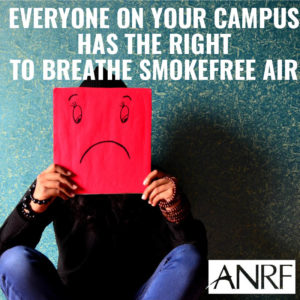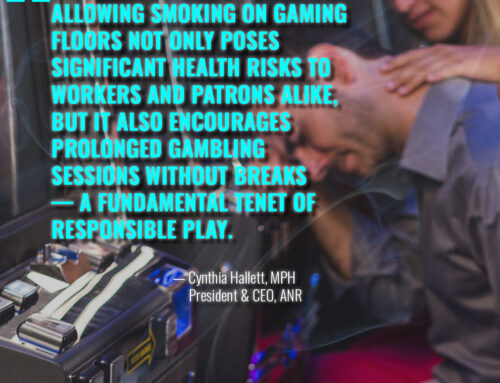On June 21, 2018, the Centers for Disease Control and Prevention (CDC) published an article on smoke- and tobacco-free college policy trends in its journal, Morbidity and Mortality Weekly Report (MMWR), which illustrates that the number of U.S. college and university campuses with smoke- or tobacco-free policies has more than doubled over the past half-decade.
The article, “Smoke-Free and Tobacco-Free Policies in Colleges and Universities ― United States and Territories, 2017,“ explains the positive policy trend toward tobacco-free campuses while also noting that there are far too many institutions that have not yet adopted strong 100% protections. College campus policy work is a critical component to building a Smokefree Society and setting a norm for tobacco-free living. The authors noted, “Smoke-free policies protect nonsmokers from secondhand smoke exposure, reduce the social acceptability of smoking, help in preventing youth and young adult smoking initiation, and increase smokers’ efforts to quit smoking. Given that 99% of adult cigarette smokers first start smoking before age 26 years and many smokers transition to regular, daily use during young adulthood, colleges and universities represent an important venue for protecting students, faculty, staff, and guests from secondhand smoke exposure through tobacco control policies.” Colleges are frequently not included in local smokefree workplace laws, so it’s vital that college and university campuses put their own policies in place to protect worker and student health.
Data from the ANR Foundation’s College Campus Tobacco Policy Database©, the only national repository of tobacco protections on college campuses in the United States, was utilized to conduct the analysis. The Colleges Database contains 98 distinct fields analyzed for each campus policy. The data are also linked to electronic copies of campus policy documentation. Each policy is analyzed for a number of variables including the type of institution (e.g., 2- or 4-year, public or private, Historically Black College or University, community college), specific policy provisions (e.g., smoking, non-combustible tobacco, electronic smoking devices, hookah, marijuana) and whether the policy protections are 100% or partial, and other descriptive data (e.g., number of students and employees). As of April 1, 2018, 2,150 campus sites are 100% smokefree, of which 1,818 are also tobacco-free (including non-combustible forms of tobacco). The ANR Foundation updates its list of Smokefree and Tobacco-Free U.S. and Tribal College Campuses and Universities quarterly (January, April, July, and October), and can provide specialized lists or datasets for educational and/or research needs.
The ANR Foundation is pleased to be part of this important effort to expand smoke- and tobacco-free policy protections on college campuses across the US. In addition to providing data, our model policies, fact sheets and other resources, as well as hands-on technical assistance, have contributed to college policy adoption, increased smokefree protections, and furthered the effort to create a social norm for tobacco-free living in smokefree cities and across tobacco-free campuses. Contact us for more information about current college policy trends or for assistance in planning a tobacco-free campus campaign. The staff at ANR Foundation can help you or refer you to one of its partners also working to support tobacco-free campus efforts.







